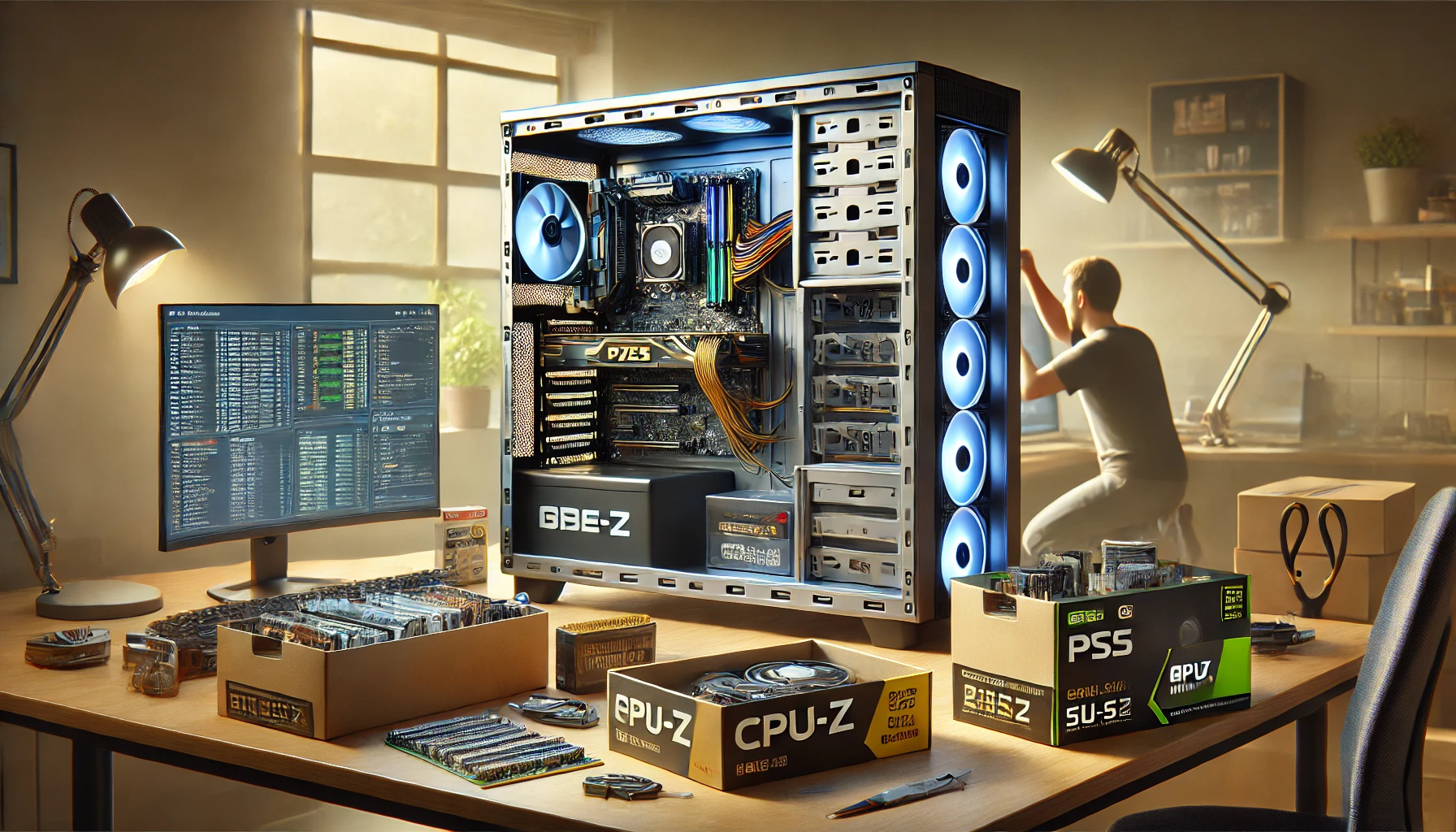A great PC doesn’t have to be perfect from day one. In fact, one of the biggest advantages of building your own computer is the ability to upgrade it gradually over time. Whether your budget is tight or you’re simply evolving your needs, knowing what and when to upgrade can keep your system running fast without breaking the bank.
In this guide, you’ll learn how to plan smart PC upgrades that maximize performance and extend the lifespan of your build.
Why Upgrade Over Time?
- Save money by spreading out expenses
- Keep up with evolving software and hardware demands
- Improve performance where it matters most
- Avoid buying parts you don’t need right away
- Reuse existing components for future builds
Upgrading step by step can be just as effective—and sometimes better—than replacing everything at once.
Know Your Current System
Before upgrading, analyze what you already have. Use these tools to check:
- CPU-Z: Full specs on CPU, RAM, and motherboard
- HWMonitor: Check temperatures and component stress
- CrystalDiskInfo: SSD/HDD health and speed
- Task Manager (Ctrl + Shift + Esc): Review resource usage
Identify your bottlenecks. Is your RAM usage maxed out? Is your GPU struggling in games? Does your PC take too long to boot?
Best Components to Upgrade First
1. Storage: Upgrade to an SSD or NVMe
Most cost-effective improvement for old systems.
- Replace old HDDs with SATA SSDs or NVMe drives
- Drastically reduces boot times and app loading
- Improves overall system responsiveness
💡 Ideal first upgrade for prebuilt or budget builds.
2. RAM: Add More Memory
If you multitask or use heavy programs, increasing RAM can make a big difference.
- Upgrade from 8GB to 16GB (or 32GB for creators)
- Make sure to match your motherboard’s RAM type and speed (DDR4 or DDR5)
- Use dual-channel kits for best performance
💡 Check your motherboard for available RAM slots before buying.
3. GPU: Boost Gaming and Creative Performance
A new GPU delivers instant performance improvements in games and video workloads.
- Upgrade if your current GPU struggles at your monitor’s resolution
- Watch for power supply and case compatibility
- Check benchmarks to compare models within your budget
💡 Consider used cards only from trusted sources to save money.
4. CPU: Upgrade with Caution
Upgrading the CPU can bring major gains, but it’s often limited by your motherboard.
- If your board supports newer CPUs (same socket), it’s a cost-effective upgrade
- Otherwise, you may need a new motherboard and RAM too (especially moving from DDR4 to DDR5)
💡 Only upgrade CPU if it’s clearly bottlenecking your GPU or workload.
5. Cooling and Case Fans
A cool PC is a stable PC.
- Add more fans for better airflow
- Replace loud or failing fans with quiet models
- Consider upgrading to an AIO cooler if your CPU runs hot
💡 Check your case for fan mounting support before buying.
6. Power Supply (PSU)
Often forgotten, but important if you upgrade to higher-power GPUs or CPUs.
- Choose a PSU with enough watts and the right connectors (e.g., 12VHPWR for newer GPUs)
- Look for 80+ Gold or better ratings
- Don’t skimp on PSU quality—it protects your entire system
7. Monitor
Not a part inside your PC, but upgrading your monitor can totally transform your experience.
- Upgrade from 60Hz to 144Hz+ for smoother gaming
- Go from 1080p to 1440p or 4K for sharper visuals
- Consider dual monitors for productivity
💡 Match monitor specs to your GPU’s capabilities.
Plan Based on Your Needs
| User Type | Suggested Upgrade Priority |
|---|---|
| Gamer | GPU > Monitor > SSD > RAM |
| Content Creator | RAM > SSD > CPU > GPU |
| Office/Student | SSD > RAM > Monitor |
| Streamer | GPU > RAM > Capture Card > PSU |
Make upgrades based on what slows you down the most—not what’s trendy.
Budget-Smart Tips
- Buy used or open-box components from trusted retailers
- Wait for sales (Black Friday, back-to-school, tech events)
- Sell old parts to offset the cost of new ones
- Reuse your case, fans, and even PSU if compatible
- Build a long-term upgrade plan based on platform life cycles
How to Know When It’s Time to Replace vs Upgrade
Upgrade if:
- A single component is holding you back
- You’re satisfied with most of your build
- You’re within the same platform/socket
Replace or rebuild if:
- You’re moving from DDR4 to DDR5
- Your motherboard doesn’t support newer CPUs or SSDs
- You’re changing form factor (e.g., ATX to Mini-ITX)
Final Thoughts
PCs don’t have to be upgraded all at once. With a smart, cost-effective approach, you can evolve your build over time, stay up to date with modern performance needs, and enjoy a smoother experience without overspending.
Start with what matters most, take your time, and enjoy the journey—your PC will thank you.
